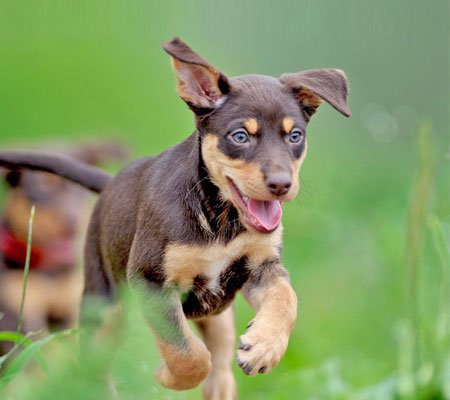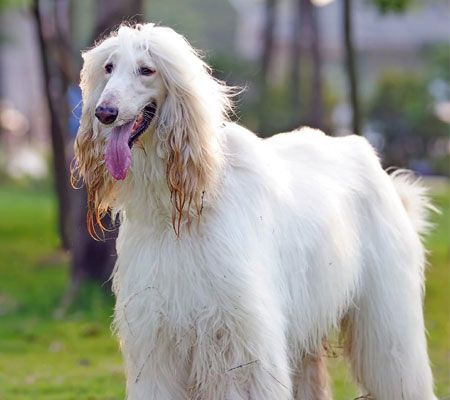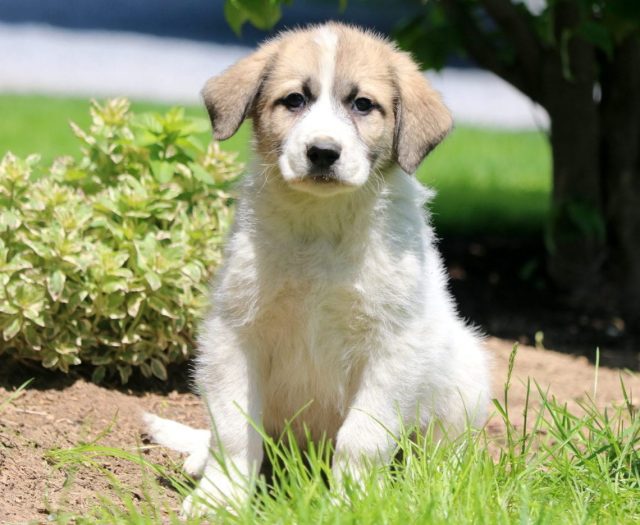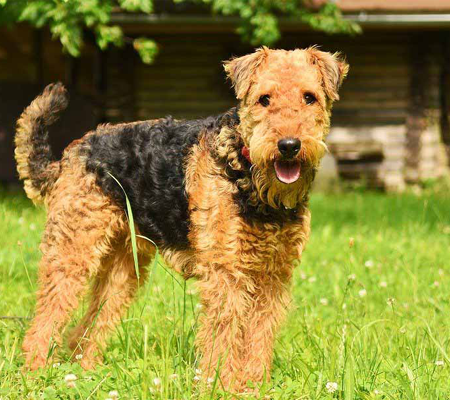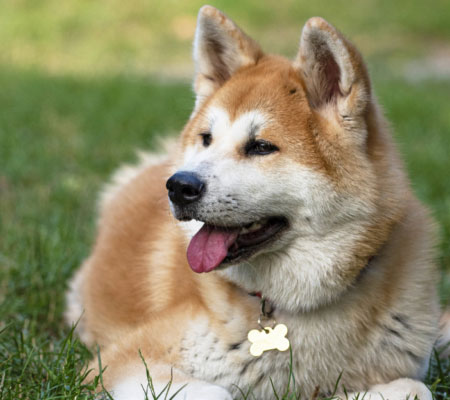The Australian Kelpie was created with the
energy, intelligence, and independence needed to herd sheep all day in the hot
Australian climate with little supervision. They still have those features now.
Australian Kelpies are still used for their
herding instincts in Australia and the United States. This fits these dogs
perfectly, since they thrive when they have a task to do. Those considering
keeping an Australian Kelpie as a pet should keep this in mind, since a bored
Australian Kelpie may find their own entertainment by acting out and
participating in harmful conduct.
The good news is that these dogs are simple to
teach for practically any task if they have a confident, capable trainer who
can provide positive reinforcement without being harsh.
Many canine sports, search and rescue activities,
nose work, service dog responsibilities, and more are all possible with
Australian Kelpies. They have a lot of energy and require a lot of exercise.
While they are capable of performing tasks with little supervision, they
require human companionship and guidance.
Australian Kelpie Highlights
Breed Size
Medium
Nature
Friendly, Outgoing, Playful, Protecative
Energy Level
Hyper
Intelligence
High
Barking Level
When Necessary
Coat Length
Short
Breed Group
Working
Droll Amount
Low
Good with
Familes, Children, Dog
Feed Level
Medium, High
Colour Type
Black, Fawn, Black & Tan, Chocolate, Cream, Blue, Brown
Other Facts
easy to train,easy to groom,tolerates being alone,tendency to chew,hot weather tolerant,loves water,good hiking companion
Dog History
As you might expect, the Australian Kelpie's tale
originates in Australia. In the 1800s, British Black Collies were introduced to
the continent to herd sheep, and they were crossbred with various breeds,
including wild dingoes. The resultant breed was sturdy, able to tolerate the
continent's harsh environment, and capable of working almost continuously. They
were admired by ranchers for their intellect and ability to work on their own.
The first dog named "Kelpie" was purchased from a Scottish man named
George Robertson in 1872, and was named after a shape-shifting river spirit
from Celtic mythology who could appear as a horse or a person.
Since then, the breed has been crossed with a
variety of animals to create the contemporary Australian Kelpie we know today.
The Australian Kelpie was then introduced to other nations, and the breed was
particularly helpful in the United States, where it rapidly adapted to the
temperature, terrain, and diversity of livestock. Australian Kelpies are now
utilised for a variety of duties all over the world, including detection,
therapy, service dog work, and dog sports performance, although they are still
often used for herding. They require training, exercise, and a lot of mental
stimulation when maintained as pets.
22-27 inch 18-25 kg 13-15 year
Height

Weight

Life Span
Health and Care
The health of the Australian Kelpie is typically
good. However, the breed may be genetically prone to a few diseases that owners
should be aware of. Cryptorchidism, hip dysplasia, progressive retinal atrophy,
Collie eye abnormality, and cerebellar abiotrophy, a neurological disorder that
impairs mobility, are just a few of them. Although these disorders are
infrequent, it is crucial to remain watchful and schedule regular vet
appointments.
Australian Kelpies don't require a lot of
attention on a regular basis. Their nails will naturally file down as they
walk, but they should be examined for damage and trimmed as needed. Brushing
your teeth on a regular basis is suggested by a veterinarian. Their ears should
be cleaned and examined for dirt, parasites, or infection. Baths should be
offered on a regular basis.
Dog Breed Care Tips and
Important Instructions
The Australian kelpie is a breed that requires
very little upkeep. To keep your kelpie looking his best, all he needs is an
occasional wash and frequent brushing to remove unwanted hair. Nail cuts are
also necessary to avoid overgrowth. Australian kelpies, like other breeds,
require regular vet visits, vaccinations, parasite control, and dental care.
Training Australian kelpies is simple due to
their eager-to-please nature. Their training should include incentives and
positive reinforcement, as with other breeds. Because kelpies enjoy having a
task to perform, introducing games and fast-paced activities during training
will help them learn new skills and master basic instructions. Instead of
extended, repeated training sessions, focus on short, high-energy workouts.
Kelpies will work hard to excel if they believe that learning new things is
their job.
Feeding
An Australian Kelpie diet should be designed for
a medium-sized breed that requires a lot of energy and activity. For
suggestions on what to feed your Australian Kelpie and the proper portion
amounts, ask your veterinarian or a professional nutritionist. As they go from
puppyhood through adulthood and senior years, their food requirements will
alter. Keep track of these dietary needs.
Fun Facts
Abbie Girl, an Australian kelpie, jumped onto her
surfboard in San Diego in 2011 and surfed a 351.8-foot wave, earning her a
place in the Guinness Book of World Records for the largest wave ridden by a
dog.
Ozzy, a kelpie cross, holds the world record for
tightrope crossing in 18.22 seconds.
In Red Dog, a tale about a migratory dog who
resided in Dampier, Australia, and became a cherished fixture in the mining
town, the title character is a kelpie. In town, there is still a dog memorial.
Red Dog, an award-winning film based on the novel, was released in 2011.
Home Training Tips and General
Information
- Love is all a dog requires.
- One of the most prevalent dog claims I hear as a
canine behavioural consultant is that all a dog requires is love. Is that
correct or incorrect? You might be surprised by my response!
- There are four things you must do correctly.
- It doesn't have to be difficult to train your
Australian Kelpie puppy. You can influence your puppy's behaviour and make
training easier right now by doing four simple things.
- What to Teach Your Puppy During Puppy Training
(and When)
- Dog training begins the minute your puppy arrives
at your home. If you utilise the incorrect training approach, your puppy will
begin to make decisions about how he wants you to fit into his life, which will
lead to conflict and behavioural issues. You must respond appropriately to
anything your puppy does, or he will learn the incorrect things. Here's how I
propose educating your Australian Kelpie puppy (what to teach, when to teach
it).
- Solving Behavioural Issues
- "How can I stop my dog from doing (a
specific harmful behaviour)?" is one of the most often asked queries by
dog owners. Whatever the infraction, my response is usually always the same.
- Buddy Became a Good Dog After Watching These Dog
Training Videos
- When you can watch the proper training tactics in
action, it's sometimes simpler to train your puppy (or adult dog). These dog
training DVDs, which are focused on respect and leadership, come highly
recommended.
- Teach The Correct Words In The Correct Context
- My training approach for Australian Kelpies
includes teaching certain phrases in precise ways so that your dog not only
learns the words but also develops the respectful attitude that makes him want
to obey you. Teach your dog to comprehend what you're saying by teaching him
words. Teach those terms in the proper context, and he will follow your
instructions.
FAQS
|
Do kelpies have a strong attachment with a single person? |
|
They are considered to be devoted and kind to their human families, but
unless adequately socialised as pups, they might be suspicious of strangers.
They are also known to form a stronger link with one member of the family
while still engaging the rest of the family. |
|
Is it simple to train Australian Kelpies? |
|
The good news is that these dogs are simple to teach for practically any
task if they have a confident, capable trainer who can provide positive
reinforcement without being harsh. Many canine sports, search and rescue
activities, nose work, service dog responsibilities, and more are all
possible with Australian Kelpies. |
|
What is the average lifespan of Australian Kelpie mixes? |
|
Despite its farming background, the Kelpie must be fully incorporated
into family life and should not be kept outside. The breed has a number of
health issues that are common to many Collie breeds, but it is typically
healthy, and most individuals survive to be 13–14 years old. |
|
How often should a Kelpie be washed? |
|
Kelpies are low-maintenance plants. Brush once a week and bathe as
needed. |
|
Is it possible to leave kelpies alone? |
|
If left to their own devices, the Kelpie is a breed with a high IQ that
may get into mischief. They need a lot of activity and might get bored if
they are locked up for too long. Keep a Kelpie busy and involved, and they'll
do well. |
|
How do I get my Kelpie to stop barking? |
|
Kelpie owners have a poor success rate with citronella, vibration, and
ultrasonic bark collars since they are a very motivated and determined
working breed. We only recommend citronella spray collars for Kelpies under
the age of six months. |
Australian Kelpie Unique Name
| Male Name | Female Name |
|---|---|
| Benny | Abby |
| Brody | Amber |
| Chance | Baby |
| Denver | Barney |
| Elmer | Blossom |
| Fisher | Grace |
| Fritz | Jade |
| Gunner | Jenna |
| Jack | Julia |
| Nelson | Kallie |
| Ollie | Lady |
| Quincy | Layla |
| Rascal | Olive |
| Taco | Pebbles |
| Vinnie | Abbey |
| Wyatt | Carley |
| Ace | Cherokee |
| pencer | Chic |
| Tommy | Cisco |
| Xena | Frankie |

